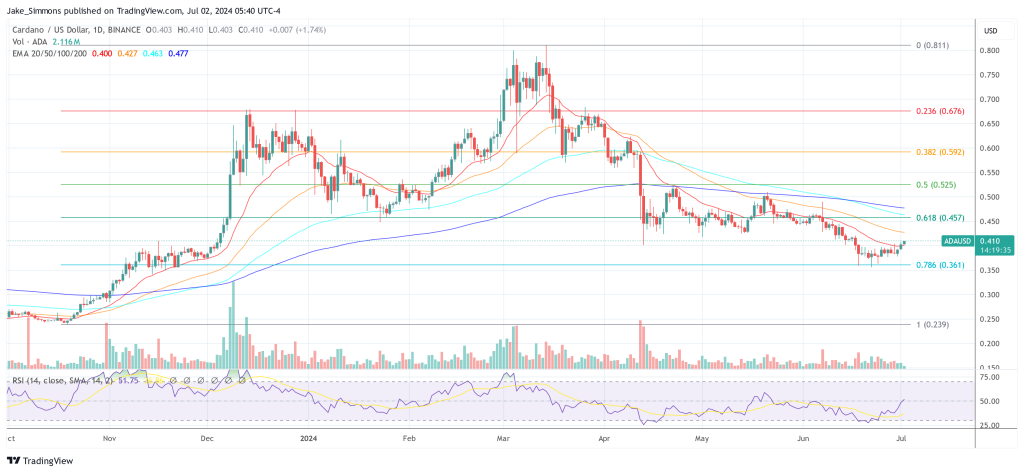- July 2, 2024
- Posted by: admin
- Category: BitCoin, Blockchain, Cryptocurrency, Investments
In an environmental assessment mandated by the emerging Markets in Crypto-Asset (MiCA) regulations, the Crypto Carbon Ratings Institute (CCRI) has released detailed sustainability indicators for the Cardano blockchain. CCRI has teamed up with the Cardano Foundation to work on the sustainability assessment which provides a granular look at the network’s energy usage, carbon emissions, waste production, and its broader environmental impact, serving as a compliance check against the European Securities and Markets Authority’s (ESMA) latest regulatory standards.
Cardano Is MiCA Ready
Cardano’s infrastructure, operating on a Proof of Stake (PoS) protocol named Ouroboros, shows a significant reduction in energy consumption when compared to traditional Proof of Work (PoW) networks. The annualized energy consumption of the Cardano network stands at 704.91 MWh. For perspective, traditional PoW networks like Bitcoin consume an immensely higher amount of energy, often equating to the output of small countries, as the report notes.
The total annualized carbon emissions for Cardano are calculated at 250.73 tonnes of CO2 equivalent. The carbon intensity, which measures the emissions per unit of electricity consumed, is noted at 356 grams of CO2 per kWh. This figure is indicative of the types of energy sources utilized by the network, reflecting a mixed reliance on both renewable and non-renewable resources.
The CCRI report states, “We find a total annualized carbon footprint of 250.73 tCO2e for the Cardano network. The carbon intensity of the consumed electricity sits at 356 gCO2 per kWh, suggesting a marginal but necessary focus towards more renewable sources to further decrease this metric.”
One of the new metrics introduced by the MiCA framework is the measurement of waste production, particularly focusing on electronic waste. The Cardano network generates approximately 8.26 tonnes of waste electrical and electronic equipment (WEEE) annually. Of this, 51.93% is not recycled, spotlighting an area for improvement in waste management practices within the network’s hardware lifecycle.
The report delves into the impacts of the network’s operations on natural resources, including the critical raw materials required for the production of the hardware components. These materials are often scarce and have significant extraction costs, both environmentally and economically. The network’s energy consumption also indirectly affects water usage, especially in regions where non-renewable energy sources are predominant and water is used extensively for cooling purposes in power generation.
Under the MiCA regulations, which came into force in June 2023, all crypto-asset service providers are mandated to disclose comprehensive environmental impacts of their operations. The CCRI’s detailed report on Cardano not only aligns with these requirements but sets a precedent for transparency in the reporting of sustainability metrics within the crypto industry.
The Cardano network, at the time of reporting, operates 3,147 nodes and has processed an annualized count of 19,530,055 transactions. These operational figures are critical in understanding the network’s physical infrastructure and its environmental load. The average power per node is reported at 25.576 watts, with the total network power amounting to 80.47 kW. The power demand per transaction per second (TPS) is 0.192 W.
Overall, the CCRI’s report provides an essential insight into Cardano’s environmental profile and its alignment with global sustainability goals. As the crypto industry faces increasing scrutiny over its environmental impact, such assessments will be crucial for investors, regulators, and the broader community to make informed decisions about the sustainability of blockchain technologies.
At press time, ADA traded at $0.41.
